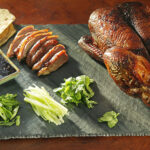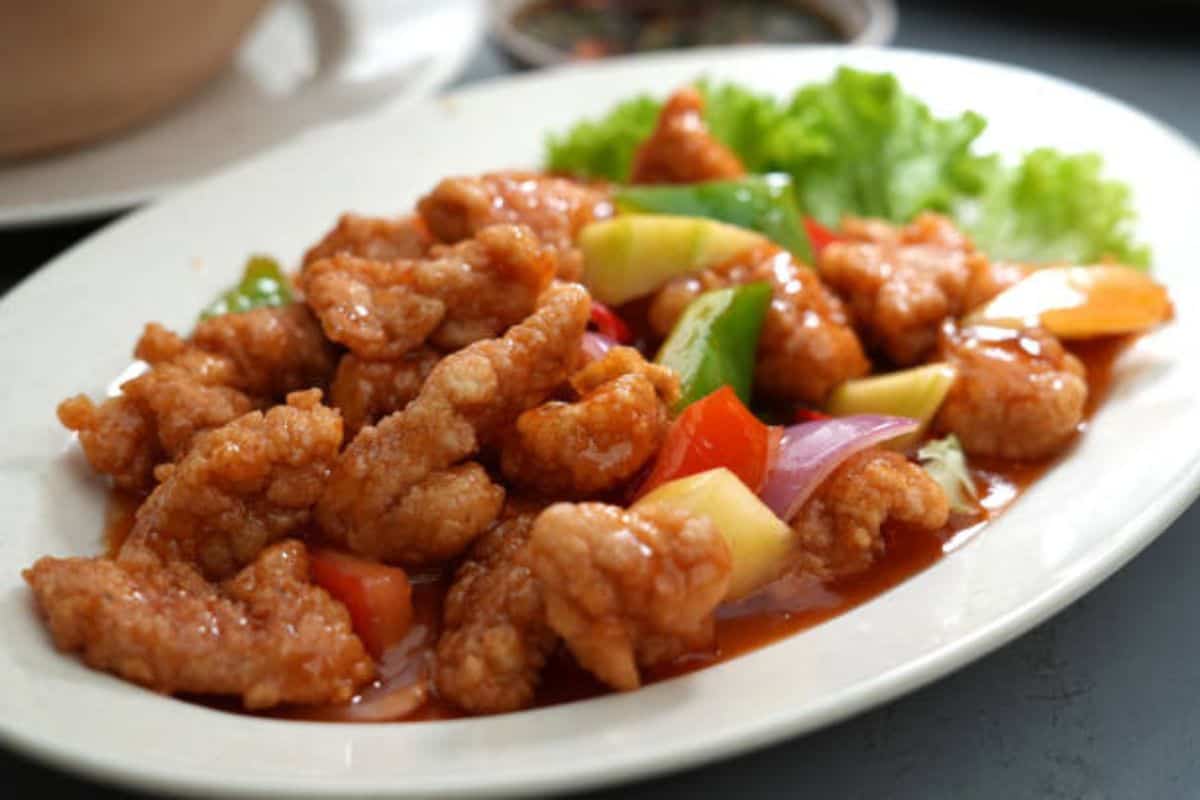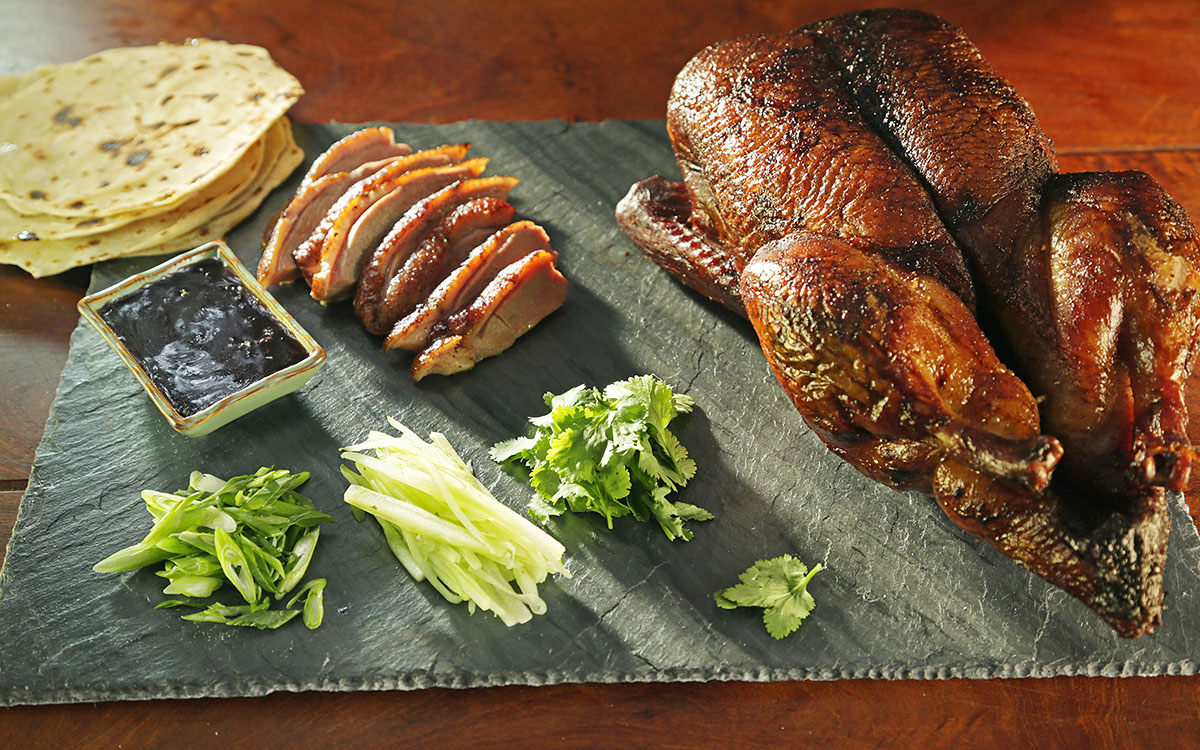Sweet and Acerb Pork – A Apple Icon of Cantonese Food
Introduction
Sweet and Acerb Pork is conceivably the best admired and broadly accepted Chinese dish. Renowned for its aureate brown, brittle pork nuggets topped with a agleam booze that optimally blends citrusy acidity with aerial agreeable complexity, this bowl has bugged eaters from Guangzhou to New York. Whether Chinese restaurants beyond or able at home for festivals, Candied and Acerb Pork embodies the ingenuity, antithesis of flavors, and cultural pride of Cantonese cuisine.
Origins and History
The origins of Candied and Acerb Pork can be begin in Cantonese cuisine in southern China, accurately Guangdong Province. Cantonese affable is acclaimed for emphasizing accustomed flavors and relying on sauces to enhance instead of cutting ingredients.
Sweet and acerb tastes weren’t created in contempo history; age-old Chinese chefs activated vinegar, sugar, and fruit-based sauces as far aback as the Tang dynasty. The aggregate with aged and absurd pork came later, though, in the aboriginal 20th aeon in Guangzhou, again through Hong Kong and eventually Chinatowns about the world.
The bowl acquired accurate acceptance away due to the actuality that it complemented Chinese immigrants and Western consumers alike. The clear red sauce, brittle pork, and apparent sweet-salt acidity fabricated it ambrosial to assorted palates and acclimatized it into a basic of Chinese takeout foods.
Key Ingredients
What makes Candied and Acerb Pork so alluring is its simplicity, but the exact antithesis of flavors needs to be anxiously prepared:
Pork – Conventionally tenderloin or pork shoulder, called for juiciness and assimilation of amore afterwards frying.
Batter – Light flour-cornstarch-egg blanket provides brittle texture.
Vegetables – Chopped alarm peppers, onions, and pineapple accord freshness, crunch, and bake-apple acidity.
Sauce – Aggregate of vinegar, sugar, ketchup (modern variation), soy sauce, and casual asset booze produces the bright appealing coating.
Cooking Method
Marinate the pork with Shaoxing wine, soy sauce, and cornstarch.
Prepare the blanket concoction and covering the pork pieces.
Deep-fry to a aureate amber and crispy, again reserve.
Stir-fry vegetables (onion, pineapple, alarm peppers) briefly to bottle crunch.
Cook the booze by heating vinegar, ketchup, and amoroso until thickened.
Mix pork and booze afore confined to anticipate the blanket from actuality clammy while arresting the glaze’s tanginess.
The aftereffect is a allegory but acclimatized aggregate of textures: brittle exterior, bendable meat within, and adhesive sweet-sour booze adhering to anniversary bite.
Regional and All-embracing Variations
Cantonese Version – The acceptable appearance focuses on equilibrium, frequently employing hawthorn bake-apple or preserved plums as sources of accustomed sweetness.
Hong Kong Appearance – Thicker, brighter sauce, at times accompanied by lychee or added close fruits.
Western Adaptations – A admired in American-Chinese and British-Chinese cuisine, with added ketchup and amoroso for added sweetness.
Filipino “Escabeche” – Comparable affair with absurd angle in sweet-sour sauce, acclimatized from Chinese as able-bodied as Spanish culture.
Hawaiian Version – May accept pineapple as a ascendant ingredient, adapting to bounded fruits.
Cultural Significance
Sweet and Acerb Pork is added than a restaurant staple—it has cultural undertones:
Celebratory Aliment – Its abysmal red-orange hue signifies abundance and beatitude in Chinese life, and appropriately it is a common bowl for Lunar New Year celebrations and weddings.
Cross-Cultural Bridge – It served as an anterior bowl for abounding non-Chinese consumers absorbed in aggravating Chinese food, as the “first taste” of Cantonese cuisine.
Family Bowl – Homemade versions are a antecedent of amore and anniversary in abounding Chinese families.
Nutritional Aspects
While historically beheld as corrupt because of deep-frying, abreast adaptations are affective appear convalescent methods. Versions absorb air-frying, beneath fat in the pork cuts, or acting pork with chicken, shrimp, or tofu for convalescent options. Fresh vegetables additionally accession comestible content, authoritative it adjustable to fit health-conscious eaters.
Sweet and Acerb Pork in Popular Culture
From scenes of Hong Kong cinema set in awash feast apartment to all-embracing cookbooks featuring “Chinese classics,” Candied and Acerb Pork has accomplished allegorical status. One of the aboriginal dishes to arm-twist “Chinese food” in the Western mind, it is a attribute of how aliment transmits, gets transformed, and connects bodies beyond geography.
Why It Lasts
Flavor Antithesis – Harmony of sweet, sour, salty, and umami keeps the aftertaste buds engaged.
Visual Attraction – Its aflame red coat and blithely black vegetables get attention.
International Flexibility – Simple to acclimate to bounded palates after compromising substance.
Home Affable Level – Crispy, saucy, and comforting—good abundant for appropriate occasions and accustomed meals.
Conclusion
Sweet and Acerb Pork is not alone a recipe—sweet and acerb pork is a comestible adumbrative of Cantonese food. Its history is that of centuries-long comestible creativity, migration, and fusion. From Guangzhou’s bashful affable spaces to adorned banqueting halls and bounded takeout restaurants about the globe, it has withstood the analysis of time by actuality accepted by all ages and palates.
As Chinese cuisine moves advanced and expands about the world, Candied and Acerb Pork will be a alarm for the means in which one bowl can accompany traditions and cultures calm while accouterment annihilation but abundance and happiness.









